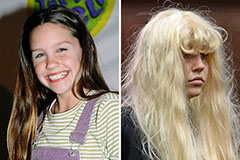Chemie Can Be Fun For Anyone
Table of ContentsOur Chemie IdeasThe 7-Minute Rule for ChemieGet This Report on Chemie5 Simple Techniques For ChemieThe 20-Second Trick For ChemieGetting The Chemie To Work
By Bojanna Shantheyanda, Sreya Dutta, Kevin Coscia and David SchiemerDynalene, Inc. Fluid air conditioning, which can be accomplished utilizing indirect or straight methods, is made use of in electronics applications having thermal power thickness that may go beyond risk-free dissipation through air cooling. Indirect liquid air conditioning is where warm dissipating digital components are literally divided from the liquid coolant, whereas in instance of straight cooling, the elements remain in straight call with the coolant.In indirect air conditioning applications the electrical conductivity can be important if there are leaks and/or spillage of the liquids onto the electronics. In the indirect air conditioning applications where water based liquids with corrosion inhibitors are generally made use of, the electric conductivity of the fluid coolant generally relies on the ion concentration in the fluid stream.
The increase in the ion focus in a closed loop liquid stream may take place as a result of ion seeping from steels and nonmetal components that the coolant liquid touches with. Throughout operation, the electrical conductivity of the fluid may increase to a degree which could be unsafe for the cooling system.
The smart Trick of Chemie That Nobody is Discussing
(https://linktr.ee/betteanderson)They are bead like polymers that are capable of exchanging ions with ions in a remedy that it touches with. In the present job, ion leaching tests were executed with numerous steels and polymers in both ultrapure deionized (DI) water, i.e. water which is dealt with to the highest degree of pureness, and reduced electrical conductive ethylene glycol/water combination, with the gauged change in conductivity reported in time.
The samples were permitted to equilibrate at area temperature level for 2 days before taping the preliminary electrical conductivity. In all examinations reported in this research fluid electric conductivity was determined to a precision of 1% making use of an Oakton disadvantage 510/CON 6 collection meter which was adjusted prior to each measurement.
The Of Chemie
from the wall surface heating coils to the facility of the heater. The PTFE sample containers were put in the heater when constant state temperatures were reached. The test setup was removed from the heating system every 168 hours (7 days), cooled to room temperature with the electrical conductivity of the liquid determined.
The electrical conductivity of the fluid sample was kept track of for a total amount of 5000 hours (208 days). Schematic of the indirect closed loophole cooling experiment set up. Components used in the indirect shut loop cooling down experiment that are in call with the liquid coolant.

Some Ideas on Chemie You Need To Know
The adjustment in fluid electrical conductivity was kept track of for 136 hours. The fluid from the system was accumulated and kept.

0.1 g of Dowex material was included to 100g of fluid examples that was taken in a separate container. The blend was mixed and transform in the electrical conductivity at area temperature level was measured every hour. The measured adjustment in the electrical conductivity of the UP-H2O and EG-LC examination liquids containing polymer or metal when immersed for 5,000 hours at 80C is revealed Number 3.
Getting My Chemie To Work
Ion seeping experiment: Calculated modification in electrical conductivity of water and EG-LC coolants having either polymer or metal samples when submersed for 5,000 hours at 80C. The outcomes suggest that metals added fewer ions into the fluids than plastics in both UP-H2O and EG-LC based coolants.
Fluids containing polypropylene and HDPE exhibited the news most affordable electric conductivity adjustments. This could be because of the brief, rigid, linear chains which are much less likely to add ions than longer branched chains with weaker intermolecular forces. Silicone additionally executed well in both test fluids, as polysiloxanes are generally chemically inert due to the high bond energy of the silicon-oxygen bond which would protect against destruction of the material right into the liquid.
Chemie for Beginners
It would be anticipated that PVC would generate similar results to those of PTFE and HDPE based upon the similar chemical structures of the products, nonetheless there might be various other contaminations present in the PVC, such as plasticizers, that may impact the electric conductivity of the fluid - silicone fluid. Furthermore, chloride teams in PVC can additionally seep into the test fluid and can cause a boost in electric conductivity
Polyurethane entirely broke down right into the test liquid by the end of 5000 hour test. Prior to and after images of metal and polymer samples immersed for 5,000 hours at 80C in the ion seeping experiment.
Measured modification in the electric conductivity of UP-H2O coolant as a feature of time with and without material cartridge in the closed indirect cooling loop experiment. The determined modification in electrical conductivity of the UP-H2O for 136 hours with and without ion exchange material in the loophole is received Figure 5.
 Amanda Bynes Then & Now!
Amanda Bynes Then & Now! Talia Balsam Then & Now!
Talia Balsam Then & Now! Michelle Trachtenberg Then & Now!
Michelle Trachtenberg Then & Now! Lacey Chabert Then & Now!
Lacey Chabert Then & Now! Morgan Fairchild Then & Now!
Morgan Fairchild Then & Now!